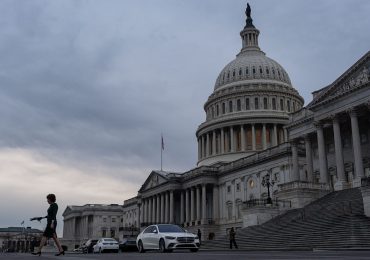Kamala Harris’ core economic objective is to build an “opportunity economy” for America. In August, she told the Democratic National Convention that she would “bring together labor and workers and small-business owners and entrepreneurs and American companies to create jobs.” There is another constituent that will be important in determining the success, or failure, of the Harris goals—namely, the capital markets. If elected, the challenge to the Harris Administration will be to craft policies that cause global investors to embrace the “opportunity economy.”
[time-brightcove not-tgx=”true”]
The two most important factors for investors are first, a growing economy and second, an increasing stock market. Obviously, there are many factors that would determine both outcomes. However, there is ample evidence that lower levels of inequality are correlated with higher overall economic growth, and that companies with inclusive practices create sustained value for their shareholders.
Economic Growth
Embedded in Harris’ vision is the assumption that economic growth does not have to be sacrificed in return for a fairer deal for workers that builds a strong middle class. In fact, economic growth has been stronger in the United States during times of less inequality and more fairness to workers. As economist Heather Boushey has argued in Unbound, How Inequality Constricts Our Economy and What We Can Do About It, when people don’t have opportunity, the entire economy loses out on talent and ideas, which weakens our markets and drags down economic growth. Between 1980 and 2023, the U.S. economy grew only 2.6% annually on average (slowing down to just 1.6% in the 2006-16 decade). This low growth era was marked by increasing inequality and a shrinking middle class. Thomas Piketty and Emmanuel Saez have found that that from 1980 to 2014 the average income of the top 1% of Americans increased from $420,000 to $1.3 million, while the bottom half of Americans experienced stagnating incomes during the same period.
This was a reversal of the economic conditions that prevailed in America in the three decades following World War II when both wages and productivity grew alongside economic expansion. The economy grew around 4% annually on average during this period when the nation experienced much lower income inequality.
The divergence between CEO and average worker pay in the post-war period vividly demonstrates the income gap that has evolved over the decades. During the first 20-years following WWII, CEOs earned 21 times the average worker pay. By the 2020s, CEO pay had skyrocketed to 344 times that of the average worker, significantly widening the gap between typical employees and corporate executives. Reasonable people should agree that addressing this imbalance is not socialism. Rather, it is a fair and necessary realignment, even if it will inflict some pain on the most highly compensated members of our society.
Harris stands on solid ground in her belief that achieving higher levels of overall economic growth does not have to come at the expense of worker well-being. In fact, history shows that economic expansion is more likely with a broader base of prosperity.
Long-term value
The “opportunity economy” will also be judged by overall stock market and specific company valuations. On this factor, there is no dearth of evidence to show that companies which provide competitive compensation and benefits, as well as advancement opportunities for their workers, are more sustainable businesses and create better value for their shareholders.
This point is demonstrated by the “JUST 100 Index,” which tracks the top 100 publicly-traded companies in the United States that pay fair and living wages, offer competitive worker benefits, and prioritize upward mobility for their lower-wage workers. Since its inception, the Just 100 Index has outperformed the Russell 1000 by 44.8%—demonstrating that companies which invest in workers create enhanced long-term shareholder value.
Similarly, the ETF “Harbor Human Capital Factor (HAPI),” a brainchild of economist Dan Ariely, identifies firms with a pro-worker culture, arguing that this drives the success of a company and ultimately its share price. HAPI has consistently outperformed the S&P 500 by delivering more than double the S&P’s gains.
Like-minded investors, business leaders and government should come together to build this “opportunity economy” and bury, once and for all, the lie that economic growth and corporate success suffer if workers are treated fairly. As Ken Chenault, former CEO of American Express said at the Democratic National Convention, “it’s possible, in fact, necessary… to be both pro-business and pro-worker.”
Since the aftermath of the Great Financial Crisis, I have worked with some of the world’s largest institutional investors, as well as forward-thinking CEOs and civic leaders, to encourage companies that treat their employees fairly, embrace their positive role in society, and commit to building a more inclusive capitalism. This movement can grow, and our work will be turbocharged by well-designed legal and regulatory reforms that create an “opportunity economy” that is dynamic, sustainable, inclusive and trusted.
Leave a comment








